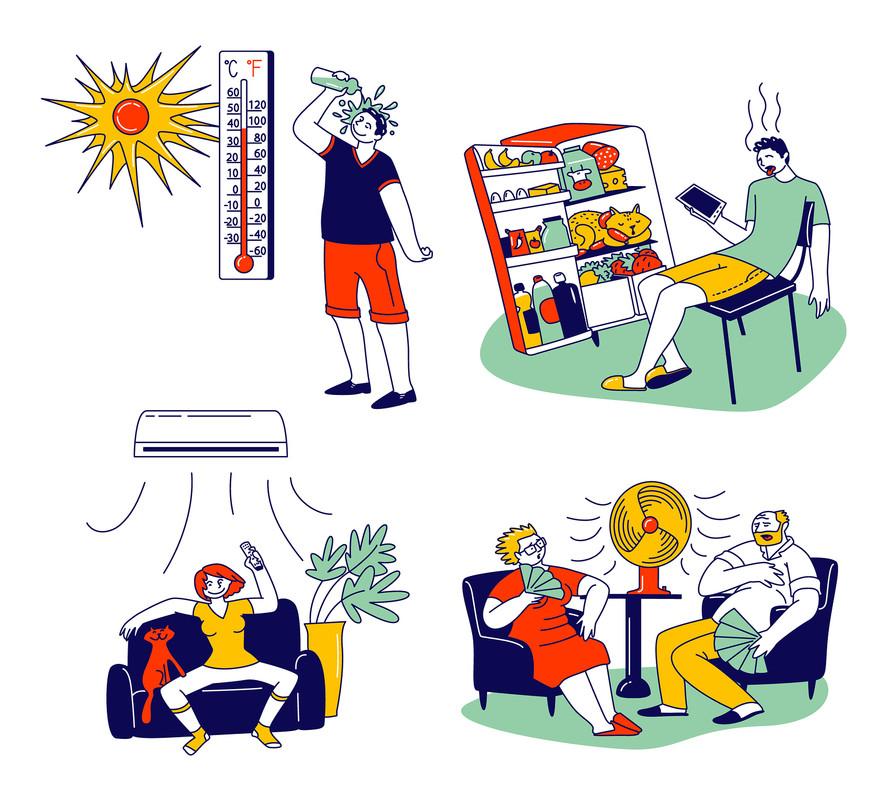
Not everyone recognizes with the different kinds of Heating and Air Conditioning devices that exist to make heating and cooling possible. As time goes on, A/C equipment modifications for the much better, normally being more expense efficient or energy effective. Understanding a few of the basic pieces and their functions could help develop a better understanding of how a Heating and Cooling system operates.
Not all Heating and Air Conditioning systems are the same, but a lot of them consist of the very same parts that are required to collaborate as a system. Whether you have the capability to do it yourself or you require to get in touch with a HVAC specialist, these parts that are consistently interacting to keep the total system running smoothly. Let's do a rundown on some A/C devices.
Heating and Air Conditioning Coils
There are two types of A/C coils in a typical A/C system; a condenser coil and an evaporator coil. The condenser coil aids in heat exchange, and simply like it states in the name, it condenses the hot refrigerant gas by being pumped outside and put under pressure to become liquid. The condenser coil then assists to release the heat, and the refrigerant comes back inside to the evaporator coil. The evaporator coil, normally found in the air conditioner, is where the household air goes through to be taken in and developed into cold air. This air is then blown through the ducts.
Air Handler
An air handler is an indoor metal box utilized for both heating and cooling. It contains the blower, which is what sends out the air through https://air-conditioning-repair-toronto.ca your house, as well as the evaporator coil. Depending upon the size of the Heating and Air Conditioning system, it's offered in various sizes and different speeds. It is among the most fundamental parts of the Heating and Cooling system. It's how your cool air and warm air reaches you.
Refrigerant Lines
Refrigerant lines are the metal tubes that the refrigerant runs through on its method to the evaporator coils. Refrigerant is what causes the cooling. The condensing system vaporizes the liquid into gas and goes to the evaporator coil as liquid. These tubes can deal with many temperature levels, from typical to severe.
Furnace
The heating system is a large system, normally concealed away in a basement or a closet. The furnace is the A/C system's heat supplier. Heat is sent out from the heating system to all the ducts of the home. There are various types of furnaces with different types of heat sources. For instance, a gas heating furnace utilizes gas and oil.
Single Phase Furnace vs. Two-Stage Furnace
The single stage heater has an on and off function, permitting the user to have complete control. The two-stage furnace overcomes the thermostat. The thermostat is utilized to identify whether hot air or cold air is needed. The two-stage heating system is advantageous for conserving energy because the furnace turns off by itself when the temperature level reaches an appropriate level.
Heat Exchanger
A heat exchanger is found in every heating system system. It's a very vital part and it should be kept clean. First, the thermostat activates the heating system. Then, the heat exchanger enters into action. Cool air enters into the heat exchanger, which is pulled from the rooms of the house or building, and is warmed to be distributed back in.
Thermostat
A thermostat is the managing part of the furnace. It senses the temperature and alerts the heating system. The majority of them are put so that they can be quickly accessed and changed by those inhabiting the house or structure. Depending on preference, they can be programmed or by hand set. A programmable thermostat is useful for controlling the temperature level during perpetuity of the day. A programmable thermostat can even assist to save money and energy.
Ducts
Ducts, or ductwork when referring to the system of ducts, are typically made from aluminum and frequently positioned within the ceiling when the house or building is built. Ductwork is accountable for transferring air to different areas of the home. It's essential to keep the ducts insulated.
Vents
A vent is a rectangle-shaped opening in which the air moved from the ducts is released. The metal utilized to make the vents is able to deal with both the cold and hot air temperatures that travel through. Take a look on or near your ceiling. They're more than likely there.
Not all vents are referred to as vents. Some have specific names. An example of one is a supply register. It's a small rectangular vent that brings the warm and cold air. The opposite of this is the return vent. https://air-conditioning-repair-toronto.ca/about-us/ The return vent is larger and made to, you thought it, return the air. It gets returned to the Heating and Cooling system to go through the process of being warmed or cooled again.
Conclusion
There you have it; more behind cooling and heating than you probably would like to know. As long as your house is receiving the correct heating and a/c, you may not reconsider the workings behind it. Now when you're at house or any structure enjoying the conveniences of one or the other, you'll be knowledgeable about what devices is making it possible.